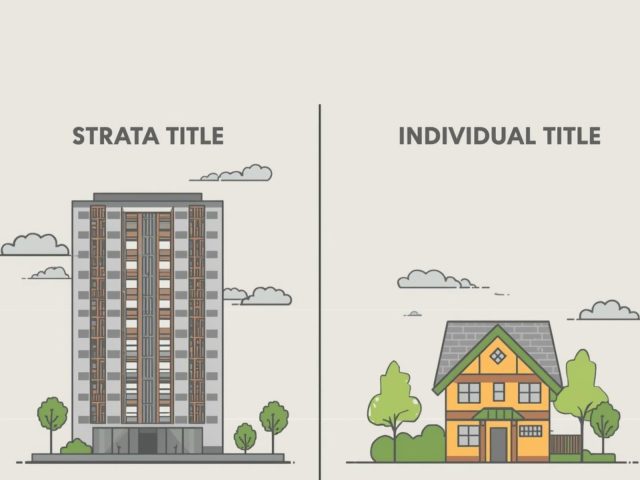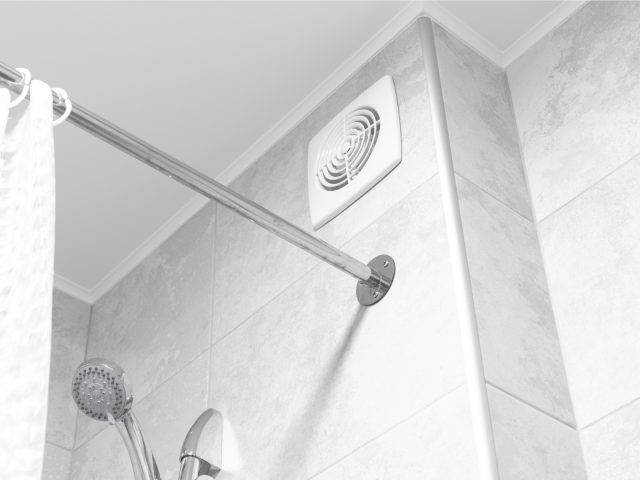Blog
Introduction
Emergency preparedness is a critical aspect of building maintenance and facility management. Buildings, whether residential, commercial, or institutional, are susceptible to sudden malfunctions, structural failures, water leaking repair needs, roof leaking incidents, toilet problems, wall cracks, fire hazards, or weather-related damages that can disrupt operations and endanger lives. Without a well-structured emergency response plan, minor issues can quickly escalate into major crises, causing substantial financial losses and reputational damage. Preparedness for emergency maintenance and repairs involves developing protocols, ensuring access to resources, training personnel, and integrating technology to mitigate risk and reduce downtime.
This article explores the fundamentals of emergency preparedness in building maintenance, focusing on the types of emergencies that typically occur, the essential components of an emergency maintenance plan, the importance of proactive planning, and the integration of digital tools to enhance responsiveness and resilience. The content is tailored to building owners, facility managers, and maintenance teams seeking to establish or improve their emergency management frameworks.
1. Understanding Emergency Maintenance in Buildings
Emergency maintenance refers to unplanned repairs or interventions required to address urgent safety, structural, or operational hazards in a building. Unlike routine or preventive maintenance, emergency tasks must be completed immediately to prevent further damage or risk to occupants. Common examples include power outages, burst pipes, HVAC failures, structural cracks, fire system malfunctions, or lift entrapments.
Emergency preparedness begins with identifying potential hazards, evaluating the risks, and having a clear action plan in place before emergencies occur. The unpredictability of emergencies makes it vital to adopt a preventive mindset, one that anticipates failures and sets protocols for rapid response [1].
In Malaysia, facilities often face challenges such as aging infrastructure, lack of technical resources, and inconsistent maintenance records [2]. These limitations amplify the consequences of emergencies, making preparedness not just a best practice, but a necessity.
2. Key Components of an Emergency Maintenance Plan
A comprehensive emergency maintenance plan should include clear response protocols, designated personnel roles, critical equipment inventories, vendor contact lists, and accessible documentation. An effective plan also accounts for communication strategies, internal and external, to ensure clarity during a crisis.
First, risk assessment is essential. Facility managers must evaluate vulnerabilities across different building systems, which includes electrical, mechanical, plumbing, fire, and structural components. Each identified risk should be assigned a response priority and mapped to relevant personnel.
In addition, response workflows must be formalized. A step-by-step process for handling emergencies, starting from detection to resolution ensures minimal confusion and downtime. For example, if a fire alarm fails during a drill, the emergency maintenance team must have clear instructions to inspect, isolate, and repair the fault within a specified timeframe, while the building management should have the budget to expedite repair of minor faults in the system.
On the other hand, all stakeholders must be trained. Regular drills, awareness sessions, and documentation reviews can significantly improve response times. Furthermore, involvement of occupants and building management personnel in emergency simulations creates a positive sense of safety and responsiveness among various stakeholders [3].
Next, building management accessibility of tools and spare parts is vital towards facilitating quick response times. Facilities that maintain an up-to-date inventory of essential components will be able to maintain timeliness as well as lower costs of repairs [4]. In addition, building management should explore the usage of maintenance apps to enable real-time tracking of these inventories, ensuring the maintenance teams are always well-equipped and ready to deal with minor repairs on-hand. For major parts, regular engagement with contractor shall be done to maintain availability of the necessary parts.
3. Common Building Emergencies and Response Strategies
Emergencies in building maintenance come in many forms, and each requires a tailored response. Among the most common emergencies are:
- Electrical Failures
Power outages and faulty wiring can halt operations or even spark fires. Emergency response involves isolating the source, using backup power where necessary, and restoring systems safely. If necessary, evacuation of affected area needs to be done in order to facilitate troubleshooting work. In addition, buildings should comply with TNB regulations regarding power systems design and maintenance.
- Water Damage and Plumbing Issues
Burst pipes, overflowing toilets, or roof leaks require immediate action to prevent mold growth, slip hazards, and structural degradation. Regular building inspection to detect building leakage and plumbing issues should be part of the response strategy to overcome the issues [5]. Every critical leakage and plumbing issue needs to be resolved in order to maintain safety and comfort of the unit owners and tenants. - HVAC System Malfunctions
In commercial buildings, loss of air conditioning can impact productivity, equipment function, and indoor air quality, while in residential buildings, especially in common areas, malfunctioning HVAC systems may affect comfort and health of residents. Emergency repairs should prioritize restoring air flow and temperature regulation, especially buildings with poor natural airflow that depend highly on mechanical HVAC systems. - Fire and Safety System Failures
Fire alarms, intercom, extinguishers, and sprinkler systems that are present in the approved building plan must be functional at all times. Regular inspection must be done to maintain the functionality of the said systems. In addition, it is recommended to conduct emergency drills that include scenarios where these systems fail, and testing backup systems or alternative evacuation protocols.
- Electrical Failures
In addition, in Malaysian high-rise residences and commercial premises, the occupants’ knowledge of fire prevention systems significantly affects their ability to respond during emergencies. Thus, preparedness includes not only maintenance readiness, but also effective user education and disbursement of information [6].
4. Leveraging Technology for Preparedness and Response
Digital transformation has enhanced how facilities manage emergency preparedness. Modern technology allows for systems such Modern Computerized Maintenance Management Systems (CMMS), which offer centralized platforms to log, assign, track, and resolve emergency tasks in real-time.
CMMS platforms enable:
- Instant generation of emergency work orders
- Mapping of building assets and failure histories
- Mobile access for technicians during off-hours
- Automated reminders for inspections and critical maintenance
Moreover, data analytics from these platforms can identify recurring issues and help managers prioritize long-term investments. For instance, if emergency HVAC repairs spike during specific months, it signals a potential for upgrading or replacing the system before the end of life cycle of the system.
Organizations that implements CMMS tools in building maintenance have reported at significant decrease in emergency downtime [7]. Similarly, cloud-based maintenance platforms facilitate faster decision-making and compliance documentation, especially during audits or insurance claims, increasing productivity while minimizing downtime [8].
5. Challenges and Solutions in Emergency Preparedness
Despite best efforts, many buildings remain underprepared for emergencies due to budget limitations, staff shortages, or fragmented communication systems. In Malaysian context, one of the main challenges in building maintenance is the lack of a formalized structure for managing emergencies, which negatively affects safety and comfort of residents, as well as compliance to local safety laws [9]. Outlined below are part of the solutions that facilitate emergency preparedness in building:
- Proactive Planning
Developing a master emergency maintenance plan that is reviewed quarterly can help identify blind spots and enforce consistency.
- Training and Certification
Encouraging maintenance staff to undergo continuous education in fire safety, electrical repairs, and CMMS use boosts their readiness to act during critical moments. - Strategic Partnerships
Having pre-approved vendors and service providers can reduce response time significantly. Formal service level agreements (SLAs) should be negotiated for 24/7 emergency support. - Regulatory Compliance
Facilities must align their preparedness strategies with local regulations, including fire codes, occupational health guidelines, and statutory maintenance requirements.
- Proactive Planning
As an addition, CIDB recommends building owners to empower facility managers through structured training and better integration of facility data in order to help the building management manage emergencies more effectively while minimizing safety risks and discomfort among residents [2].
Conclusion
Emergency preparedness in building maintenance and repairs is not a luxury, it is a necessity. As urban environments grow more complex and infrastructure ages, the likelihood of unexpected failures increases. Building owners and facility managers must proactively implement emergency maintenance plans, invest in training, and adopt digital solutions that enable real-time responsiveness. By doing so, they safeguard not only the physical assets of the building but also the safety, well-being, and trust of its occupants.
Effective emergency preparedness integrates planning, people, technology, and communication. The cost of inaction is high, ranging from life-threatening situations to significant financial losses. However, with the right systems in place, emergency scenarios can be managed with confidence, speed, and minimal disruption.
References
[1] OSHA. (n.d.). Emergency Preparedness and Response: Getting Started. Occupational Safety and Health Administration. Retrieved on 22nd August 2023 from https://www.osha.gov/emergency-preparedness/getting-started
[2] CIDB Malaysia. (2021). Facilities Management Initiatives Empowerment for Construction Industry in Malaysia. Retrieved on 22nd August 2023 from https://www.cidb.gov.my/wp-content/uploads/2022/07/215-Facilities-Management-Intiatives-Empowerment-fo-Construction-Industry-in-Malaysia-min.pdf
[3] Nonprofit Risk Management Center. (n.d.). Facility Agility: Planning for Facility Emergencies. Retrieved on 22nd August 2023 from https://nonprofitrisk.org/resources/facility-agility-planning-for-facility-emergencies/
[4] Fiix Software. (2020). Emergency Maintenance – Glossary. Retrieved on 22nd August 2023 from https://fiixsoftware.com/glossary/emergency-maintenance/
[5] DOSH. (2019). Guidelines on Control of Molds Contamination and Remediation. Department of Occupational Safety and Health Malaysia. Retrieved on 22nd August 2023 from https://dosh.gov.my/wp-content/uploads/2024/10/Guidelines-on-Control-of-Molds-Contamination-and-Remediation-2019.pdf
[6] Rosdi, M. A., Sarpin, N., Kai Chen, G., & Shafii, H. (2022). Pengetahuan dalam Penggunaan Sistem Pencegahan Kebakaran dalam Kalangan Penghuni Bangunan Kediaman Bertingkat. Research in Management of Technology and Business, 3(2), 455-466. Retrieved on 22nd August 2023 from https://publisher.uthm.edu.my/periodicals/index.php/rmtb/article/view/9569
[7] Eisner, C. (2022). Emergency Maintenance Explained. MaintainX Retrieved on 22nd August 2023 from https://www.getmaintainx.com/learning-center/emergency-maintenance-em
[8] UpKeep. (n,d,). Emergency Maintenance: Learn What It Is & How to Prevent It. Retrieved on 22nd August 2023 from https://upkeep.com/learning/emergency-maintenance/
[9] BuildingRepair.my. (2021). 6 Main Building Maintenance Challenges and Solutions in Malaysia. Retrieved on 22nd August 2023 from https://buildingrepair.my/6-main-building-maintenance-challenges-and-solutions/
Categories
Archives
- June 2024
- January 2024
- December 2023
- November 2023
- October 2023
- September 2023
- August 2023
- July 2023
- June 2023
- May 2023
- April 2023
- March 2023
- February 2023
- July 2022
- November 2021
- October 2021
- September 2021
- August 2021
- July 2021
- June 2021
- May 2021
- April 2021
- March 2021
- February 2021
- January 2021
- December 2020
- November 2020
- October 2020
- September 2020
- August 2020
- July 2020
- June 2020



